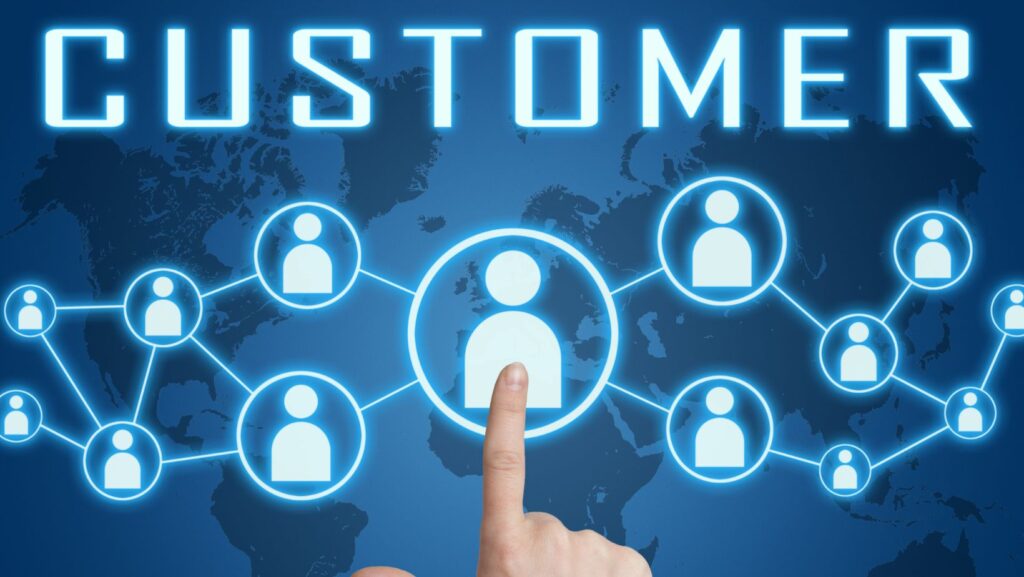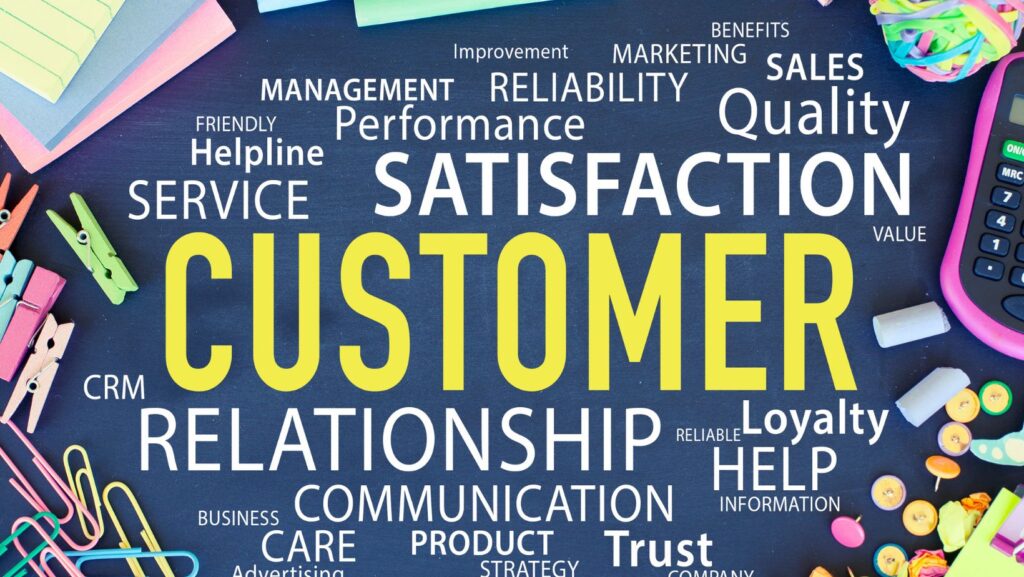Mastering Customer Relationships: Proven Strategies for a Thriving Business

Building and sustaining great customer relationships with clients is more crucial than ever in the competitive business world of today.
Setting your brand apart from the competition will give your brand’s capacity for long-term, devoted partnerships directly affecting your business’s capacity for profitable growth.
This post discusses a number of methods and ideas to assist you in developing and maintaining solid client connections that will ultimately be advantageous to your company.
Understanding Your Customers

Understanding your clients’ needs, tastes, and expectations is essential before you can successfully develop relationships with them.
With this information, you’ll be able to customize your communications and products to fit their particular needs, building rapport and confidence.
Identifying customer needs and preferences
Setting up efficient communication channels and getting to know your clients better are crucial components of developing good customer relationships.
Making an Ideal Customer Profile (ICP), which aids in identifying and focusing on your greatest potential consumers, is one way to accomplish this.
An ICP is a thorough account of a fictitious consumer who is most likely to take advantage of your goods or services and stick by your company.
You can tailor your marketing initiatives and communications to better connect with your target audience by concentrating on your ICP.
You should compile data about your clients’ demographics, industries, firm sizes, job descriptions, pain issues, and objectives in order to construct an ICP.
You can get this information using a variety of techniques, such as interviews, surveys, social media research, and analysis of your current consumer data.
Aspects like the customer lifetime value (CLV), which denotes the overall revenue a customer is anticipated to create for your company over the course of their relationship, should also be considered.
Segmenting your customer base
An excellent way to comprehend and better serve the varied demands and preferences of your customers is to segment your customer base.
Customer segmentation is the process of grouping your consumers based on traits they have in common, such as demographics, shopping habits, interests, and demands.
These groups can be analyzed to help you develop customized marketing initiatives, product offerings, and customer service programs that appeal to each segment and increase engagement, satisfaction, and loyalty.
By segmenting your customer base, you may more effectively manage your resources and focus your efforts on the most lucrative consumer segments.
It aids in locating underrepresented markets and prospective expansion prospects. Collect and evaluate data from a variety of sources, including CRM systems, surveys, and sales records, to successfully segment your client base.
Develop tailored strategies for each group after you’ve identified the important segments in order to provide your clients with individualized experiences that leave them feeling appreciated and understood.
Communication Strategies

Strong customer relationships are built on effective communication. Personalizing your interactions and creating open and consistent communication channels can greatly increase client engagement and loyalty.
Establishing open and consistent communication channels
Email newsletters
- To keep customers informed and sustain their interest in your business, offer them informative and compelling information on a regular basis, such as product updates, promotions, and industry news.
- To prevent overloading or alienating consumers, optimize email frequency and timing depending on customer preferences and engagement metrics.
Social media engagement
- Keep an active presence on well-known social media sites like Facebook, Instagram, and Twitter to communicate with clients, offer updates, and address questions or comments.
- To establish a unified brand identity that connects with your audience, use a consistent brand voice, and look across all media.
Online forums and communities
- Create or join online discussion boards, groups, or communities where your target audience is present, contributing insightful commentary and fostering sincere connections.
- To foster a sense of trust and community, invite customers to contribute their insights, suggestions, and queries and then promptly and thoughtfully address them.
Personalizing communication
Customer-specific content
- Use customer data and segment information to develop tailored content that speaks to the unique needs and interests of each individual.
- Leverage marketing automation tools to send personalized emails, promotions, and product recommendations based on customers’ browsing and purchase history.
Tailored offers and promotions
- Offer customized deals, discounts, or bundles based on customers’ preferences, purchase history, or loyalty program status to make them feel valued and encourage repeat business.
Listening to customer feedback
Surveys and polls
- Conduct regular customer surveys and polls to gather feedback on your products, services, and overall customer experience.
- Analyze the results to identify areas for improvement and implement changes, accordingly, demonstrating your commitment to meeting customer needs.
Customer reviews and testimonials
- Encourage customers to leave reviews on your website, social media profiles, or third-party review platforms to provide valuable insights and social proof for prospective customers.
- Respond to both positive and negative reviews with gratitude and professionalism, highlighting your dedication to customer satisfaction and continuous improvement.
Delivering Exceptional Customer Service

Building and maintaining good client relationships depends on offering exceptional customer service. You may improve the customer experience by investing in staff training, creating customer-centric policies, and providing different support channels.
Provide comprehensive training programs for your customer service team, covering product knowledge, communication skills, and problem-solving techniques.
Offer regular refresher courses and updates to ensure your team stays current on industry developments and company policies.
Implementing customer-centric policies, and develop and enforce policies that prioritize customer satisfaction, such as flexible return and exchange policies or satisfaction guarantees.
Regularly review and update policies to ensure they align with customer needs and expectations.
Providing multiple support channels
Phone support
- Offer a dedicated phone line for customer inquiries, staffed by knowledgeable and empathetic representatives who can provide real-time assistance.
- Implement call monitoring and recording systems to ensure quality and enable ongoing staff training and improvement.
Live chat
- Integrate live chat functionality on your website, allowing customers to receive immediate support without leaving your site.
- Utilize chatbots to manage common inquiries, freeing up your support staff to focus on more complex issues.
Social media support
- Monitor your social media profiles for customer inquiries and respond promptly, demonstrating your commitment to customer satisfaction and accessibility.
Building Customer Trust

Establishing trust is an essential component of strong customer relationships. Demonstrating transparency, protecting customer data, and adhering to ethical business practices will help foster a sense of trust and loyalty among your customers.
Transparency and honesty: Clearly communicate product features, pricing, and policies to avoid confusion or misrepresentation. Openly address any mistakes or issues that arise, offering a genuine apology and outlining steps to rectify the situation.
Data privacy and security: Implement robust security measures to protect customer data, including encryption, firewalls, and secure payment processing systems. Clearly communicate your data privacy policy, detailing how you collect, use, and store customer information.
Ethical business practices: Adhere to industry standards and regulations to ensure your business operates ethically and responsibly. Display your commitment to social and environmental causes that align with your brand values, fostering a positive brand image and attracting like-minded customers.
Creating a Loyalty Program

A well-designed loyalty program can incentivize repeat business, referrals, and customer advocacy, further strengthening customer relationships.
Allow customers to earn points for purchases or actions, such as sharing content or referring friends, which can be redeemed for rewards, discounts, or exclusive offers.
Offer increasing levels of rewards and benefits based on customers’ spending or engagement, encouraging continued loyalty and investment in your brand.
Collaborate with complementary businesses to offer joint rewards or benefits, expanding your customer reach and increasing the perceived value of your loyalty program.
Incentivizing referrals and advocacy by rewarding customers for referring friends or leaving positive reviews, encouraging them to share their experiences and promote your brand to their networks.
Tracking and analyzing loyalty program success by monitoring key performance indicators (KPIs) such as program participation, reward redemption rates, and customer lifetime value to assess the effectiveness of your loyalty program and identify areas for improvement.
Engaging Customers Through Events and Experiences

Creating memorable experiences and events can deepen customer connections and further enhance brand loyalty. Organize webinars, workshops, or product demonstrations to educate and engage customers, positioning your brand as an industry expert.
Host in-person events, such as launch parties, networking sessions, or customer appreciation events, to foster personal connections and create memorable experiences.
Partner with influencers or industry experts to co-host events, create content, or promote your brand, leveraging their credibility and audience to expand your reach.
Organize joint events or collaborations with complementary businesses, providing added value to customers and fostering a sense of community.
Create and Design memorable, shareable experiences, such as unique product packaging, immersive store installations, or online challenges, to encourage customers to engage with your brand and share their experiences on social media.
Continuously Improving Customer Relationships

Regularly monitoring and evaluating your customer relationships will help you identify areas for improvement and adapt to changing customer needs and expectations.
Monitoring customer satisfaction metrics, and track customer satisfaction metrics for example Net Promoter Score (NPS), Customer Satisfaction Score (CSAT), and Customer Effort Score (CES) to gauge the health of your customer relationships.
Analyzing customer feedback for improvement opportunities a business must conduct regular customer feedback analysis to identify areas where your products, services, or customer experience may be falling short, and implement changes accordingly.
Use customer feedback to inform product development, marketing strategies, and customer service improvements, ensuring a customer-centric approach throughout your organization.
Adapting to changing customer needs and expectations a business must continuously monitor market trends, customer preferences, and competitor activities to stay informed about the evolving needs of your target audience.
Adjust your products, services, and communication strategies as needed to ensure your brand remains relevant and appealing to your customers.
Strategy Checklist/Work Breakdown Structure (WBS)

Business Name: Delightful Bites Bakery
Understanding your customers
Identifying customer needs and preferences
- Conduct local market research to understand customer preferences for baked goods
- Analyze sales data to identify best-selling items and customer trends
- Monitor competitor bakeries’ offerings and promotions
Segmenting your customer base
- Group customers by demographics, order frequency, and product preferences
- Develop targeted marketing campaigns and offers for each customer segment
Creating customer personas
- Develop three to five data-driven personas representing different customer segments
- Use personas to guide product development, marketing strategies, and customer service initiatives
Communication strategies
Establishing open and consistent communication channels
- Create a monthly email newsletter featuring new products, promotions, and events
- Set up and maintain social media profiles on Facebook, Instagram, and Twitter
- Launch a blog on the bakery’s website to share recipes, tips, and behind-the-scenes content
Personalizing communication
- Implement a CRM system to collect and analyze customer data for targeted marketing
- Create tailored offers and promotions based on customer purchase history and preferences
Listening to customer feedback
- Distribute satisfaction surveys to customers after each purchase or event
- Encourage customers to leave reviews on the bakery’s website and social media profiles
Delivering exceptional customer service
Investing in staff training
- Provide new employees with a comprehensive onboarding program
- Schedule regular training sessions for staff to learn about new products and customer service techniques
Implementing customer-centric policies
- Establish a clear and fair return policy for damaged or unsatisfactory products
- Offer convenient pre-order and pickup options for customers
Providing multiple support channels
- Set up a dedicated phone line and email address for customer inquiries
- Implement live chat functionality on the bakery’s website
- Respond to customer inquiries and feedback on social media within 24 hours
Building customer trust
Transparency and honesty
- Clearly display product ingredients, prices, and policies in-store and online
- Address and resolve any customer complaints or issues promptly and professionally
Data privacy and security
- Implement a secure payment processing system for online and in-store transactions
- Develop and display a clear privacy policy outlining the collection and use of customer data
Creating a loyalty program
Launching a point-based loyalty program
- Design a system where customers earn points for every purchase made
- Offer various rewards and discounts for point redemption
Incentivizing referrals and advocacy
- Reward customers with bonus points or discounts for referring friends and family
- Offer special promotions for customers who leave positive reviews or share content on social media
Engaging customers through events and experiences
Hosting online and offline events
- Organize monthly themed baking workshops or webinars for customers
- Plan an annual customer appreciation event with special offers and activities
Collaborating with influencers and industry experts
- Partner with local food bloggers or influencers for promotional campaigns or events
- Invite guest pastry chefs or nutritionists for special workshops or product collaborations
Creating memorable, shareable experiences
- Design Instagram-worthy product packaging and in-store displays
- Organize seasonal or holiday-themed baking contests for customers to participate in and share on social media
Continuously improving customer relationships
Monitoring customer satisfaction metrics
- Track Net Promoter Score (NPS) and Customer Satisfaction Score (CSAT) through surveys
- NPS formula: (Number of Promoters – Number of Detractors) / (Number of Respondents) x 100
- CSAT formula: (Total sum of satisfaction scores) / (Number of Respondents) x 100
Analyze sales data to identify trends in customer preferences and repeat purchases
Analyzing customer feedback for improvement opportunities
- Compile and review customer feedback from surveys, reviews, and social media
- Implement changes to products, services, or customer experiences based on feedback analysis
Adapting to changing customer needs and expectations
- Stay informed about market trends and competitor activities in the bakery industry
- Adjust product offerings, marketing strategies, and customer service initiatives as needed
Final Thoughts
Long-term business success depends heavily on developing and sustaining good customer relationships.
You may lay a solid basis for long-term customer relationships by comprehending your clients, putting effective communication techniques into practice, offering outstanding customer service, cultivating trust, developing a loyalty program, and engaging customers through events and experiences.
To guarantee that your tactics are still meeting the requirements and expectations of your customers, keep in mind that creating customer relationships is a continuous process that calls for a long-term commitment and continuous evaluation.
Bio:

Ronnie Patterson
Ronnie Patterson, founder of MagnÜron, is a multifaceted entrepreneur with a diverse background in music, electronics engineering, and engineering management. Drawing on experience across various industries, He offers expertise in SEO, operations, and strategy to help businesses thrive. Possessing a unique perspective and unwavering commitment to collaboration, and ideal partner for growth and success.






